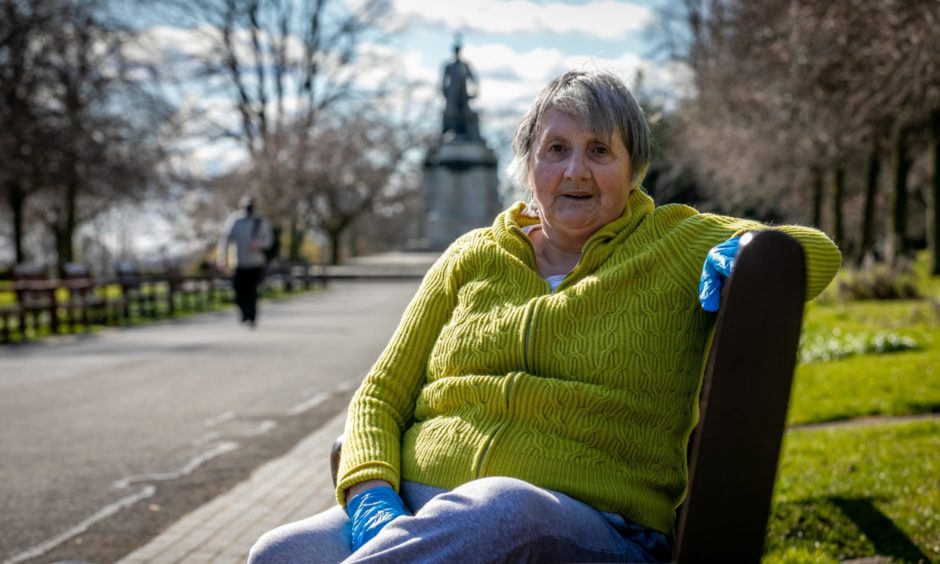There are no plans to offer the UK population a choice of coronavirus vaccine.
Government officials have confirmed the programme will continue to give patients whatever brand is in stock locally on the day.
But where does this leave people pushing to have a choice?
Ultimately, the UK Government could have seven different vaccines, after pre-ordering doses from the most promising options.
Three have so far been approved: Oxford/AstraZeneca, Pfizer-BioNTech, and Moderna, though Tayside and Fife will have to wait for the latter.
It’s ‘strange’ we can’t choose
Some countries have suspended use of AstraZeneca pending further investigation into possible side effects, raising fears others may be safer.
The concerns centre on research that shows the shot may have caused blood clots in a very small number of patients.
Independent regulators in the UK, however, have stressed the benefits “far outweigh” the risks.
Dunfermline resident June Simpson, who nearly died from a lung blood clot in 2019, says she has repeatedly asked for the Pfizer jag, without any luck.
“When my appointment came by post I contacted the number to ask if AstraZeneca or Pfizer would be on offer,” she said.
“I was told no one knew which vaccine would be at the clinic until it was opened that morning just prior to the clinic starting. I admit I found that rather strange. I couldn’t find out until I turned up?
“I will be 74 soon and by rights ought to have been immunised against Covid-19.
“I wasn’t and so remain at risk three months on.”
‘My reaction was unusual’
Lorraine Wilson, a 54-year-old journalist living in Monifieth, fell ill with Covid-19 in April last year and struggled with tiredness for months afterwards.
She received the AstraZeneca vaccine in March but it caused her to feel ill for a week.
She woke up feeling sick and with a severe headache the evening after her jag, with both lasting for days. She also struggled with tiredness.
“The fatigue, headache and nausea felt a little bit like the previous April when I was in bed for 10 days with Covid-19, which had the addition of the constant cough and abdominal pains,” she said.
Despite being unable to escape vaccine side-effects, she stressed her gratitude at being given further protection.
Lorraine, who is The Courier’s head of arts and entertainment, said: “To be honest, I didn’t do a lot of research on the vaccines and was happy to take what was offered.
“I’ve just been happy that we’ve been able to get through so many people so quickly.
“I know some people who have felt a bit off for a day but also others who have been absolutely fine with no reaction at all.
“My reaction was unusual, but it wasn’t as bad as having Covid.”
The majority of people receiving AstraZeneca, as well as the other vaccines, experience very few side effects.
Why do leaders think this is the best approach?
It’s understood authorities feel giving people a choice would suggest some are better than others.
Logistically, it would also add more layers of organisation to an already complex and rapid programme.
There’s also the issue of varying stock levels (the Moderna supply will only be enough for 8.5 million people).
So far, only the youngest will be able to choose.
The Joint Committee for Vaccination and Immunisation (JCVI) advised in early April that it is preferable for people under 30 to have a vaccine other than Oxford/AstraZeneca.
The guidance has since been updated to include people under 40.
The NHS say those choosing to do this may have to wait to be protected.
A UK Government spokesperson said: “The Oxford/AstraZeneca vaccine is safe, effective and has saved thousands of lives already.
“As the UK’s independent medicines regulator, the MHRA, and the JCVI have said, the benefits of the vaccine far exceed the risks for the vast majority of adults.
“Everybody who has already had a first dose of the AstraZeneca vaccine should receive a second dose of the same brand, irrespective of age, except for the very small number of people who experienced blood clots with low platelet counts from their first vaccination.”
Most have not experienced ‘any serious side effects’
The Scottish Government says individuals are given vaccines based on availability and, for some people, clinical reasons such as a severe allergy.
The full explanation is outlined on the NHS Inform website.
The Royal College of General Practitioners (RCGP), which represents GPs, says the risk of blood clots is “extremely rare”.
RCGP Scotland’s joint chair, David Shackles, said: “We can understand the concerns that people may have about the AstraZeneca vaccination; however, it is crucial for patients to understand that the risk of developing blood clots after receiving the AZ vaccine is extremely rare for all patient groups.
“The vast majority of patients who have received the first dose of the AZ vaccination have not experienced any serious side effects, therefore can be reassured that the vaccine is safe and that they should still come back for their second dose.
“The JCVI advice remains that the AZ vaccine benefit outweighs the risk in those over 30. In under 30s, an alternative can be used, if available.
“GPs and our teams have been working incredibly hard to deliver an unprecedented number of vaccinations to protect patients from the virus and will continue to do so in future.
“We would continue to urge all patients to come forward for their vaccination when invited.”
What’s the difference between the vaccines?
Pfizer’s efficacy rate is 95%, Moderna’s 94.5% and AstraZeneca’s 81.3% after two doses.
Pfizer is a new type of vaccine called a synthetic mRNA, made from enzymes.
It stands for “messenger” RNA, meaning it sends codes into the body to tell it how to produce antigens.
Moderna is also an mRNA vaccine, made similarly to Pfizer.
AstraZeneca is a viral vector vaccine that uses a chimpanzee cold virus that contains genetic information about the Covid-19 spike protein.
These types are easier to manufacture than mRNA-based formulas.
People have reported similar, common side effects after receiving each.
The NHS says it is normal to experience some side effects such as tenderness, nausea, tiredness, and headaches.
The only potentially more serious side effect being investigated by researchers is reports of very rare blood clotting in patients who have received AstraZeneca.
There are similar concerns surrounding a viral vector shot by Johnson & Johnson, which is delaying its rollout in Europe amid a US probe into rare blood clots.
The UK has ordered 30 million doses of this.
Another, Novavax, could be approved soon.

